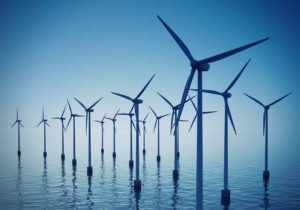
Each year 20 seafarers on average die at sea. The main danger a survivor faces is hypothermia. In cold water life functions fade away as soon as after 45 minutes. Most currently available signalling and alarm devices have an auto emergency call function, but the waiting time can be as long as several or even a dozen hours. With this small device, emergency services may significantly speed up their reaction. A thread made of carbon nanotubes may generate electricity, so the device does not require any battery. All it needs is sea water.
Dynamic market
The market of life saving and emergency signalling devices is developing dynamically. This not only involves solutions in, broadly speaking, healthcare and telemedicine, but also security devices. We are still lacking solutions which would prove well in sea accidents.
Today’s most popular devices are Emergency Position Indicating Radio Beacons, which once activated, send the ship’s position to satellites. From there the data are transferred to a local user terminal, sent to the mission control, and then to the rescue coordination centre. Other solutions also transmit position data, but they need to be activated first. However, they are often not very useful in an accident.
With a new carbon nanotube technology, rescue missions after accidents at sea and aircraft ditching may now become much faster.
“We may get electricity from ocean water and use it in critical situations when people are injured at sea. The device is made of carbon nanotubes, which may generate electricity using sea water by stretching. We have also added a capacitor to store that energy for later use, whenever it is needed,” Tae Jin Mun of the Hanyang University, Seoul told Newseria Innowacje.
Emergency Signal Devices
These are devices with their own independent power systems. The device generates electricity from ocean waves, without any battery, transmits the GPS signal and a LED light to facilitate the rescue mission. It uses the carbon nanotube technology. Threads made of carbon nanotubes may generate electricity by stretching and twisting. When the yarn is twisted or stretched, its volume reduces, electrical charges get closer to each other and increase their energy.
To generate electricity the yarn must be submerged in water or covered with a conducting material or electrolyte, so a mixture of water and salt, or sea water will suffice. The device does not need a battery, it generates power by itself and therefore may be used in location devices and will work fine in all kinds of rescue missions.
“The device is designed for situations when somebody, seriously wounded at sea, needs medical aid soon. With our device the rescue team may arrive sooner”, argues Tae Jin Mun.
The International Association of Dry Cargo Shipowners’ (Intercargo) Bulk Carrier Casualty Report reveals that for the past decade nearly 200 seafarers lost their lives at sea as a result of collisions or incidents in which bulk carriers were involved. However, accidents occur much more frequently – according to information provided by the Baltic Marine Environment Protection Commission (HELCOM), every year there are up to 120 incidents in which ships are involved on the Baltic.
Hypothermia is particularly dangerous – according to the data included in the International Aviation and Maritime Search and Rescue Guidebook, for people not wearing rescue suits, the survival time is max. around 45 minutes in water temperature of up to 2 degrees Celsius. In maritime accidents, the rescue often arrives too late. With the carbon nanotube technology, all the survivor must do is to activate the device. The rescue team would instantly receive the precise location.
“Now when the costs are high, we need to carry out further research into mass production and reduce the costs of our materials. Once this process is completed, we will be ready to market our product,” says Tae Jin Mun.[1]
The article comes from the site: Newseria.pl
[1] https://innowacje.newseria.pl/news/rewolucyjne-urzadzenie,p336448019




